#Blue cow of India
Explore tagged Tumblr posts
Text
#LongPost: A Few Hyper-Specific Things About India for India-Based Stories and Art
No this isn't a cry for more Indian-rep in Spider-Verse stories. (It is.)
Anyway. I recently went to India, and after returning to my hometown in Tamil Nadu, I reintegrated a whole slew of memories and collated new facts.. And considering I've been wanting to do one of these for quite some time (and because I need a new variety of Pavitr Prabhakar content), I thought it'd be cool if I shared some of my experiences and ideas with you.
It's best to take this with caution, though: the only places I've been to are Tiruchirappalli, Madurai, and a few towns located close to the Eastern Ghats, so my knowledge is heavily South India-based. I know for a fact that there are various similarities and differences between other geo-cultural areas of India, which is I why I've linked the other cool India Resources here as well.
In Which I Ramble About Pavitr's Character Design and the Indian Cultural Stuff Related to It by @chaos-and-sparkles (+ my addition + @neptune432's addition)
A culture post for the girlie pops (and non-girlie pops) looking to write Pavitr Prabhakar accurately by @summer-blues-stuff (+ my addition + @fandomsfeminismandme addition)
Also a timely reminder of @writingwithcolor's wonderful resources on writing about South Asian characters respectfully and sincerely
Now, for the things I've noticed in South India..
ANIMALS
There are a lot of street dogs. Like... a lot of them. And honestly it's so hard not to go up to one and give them a snack or two. The most notable dog breed is the Indian pariah and they can be found all over India. Mixed dog breeds are also common and results in a variety of features like differences in build and coat colours.


There are also other types of animals are pretty common to see alongside the roads.
Cattle are seen a lot (cows and bulls are easy to distinguish; cows (left) have udders and a small hump on their back, while bulls (right) are generally stockier and have a super-defined hump on their back). I'm pretty sure the specific cow breed is the sahiwal cow. They are either herded into paddocks for grazing or can be found wandering city streets on their own.


Goats are often herded by farmers into large masses of wool and horns and are guided to paddocks to graze. Sometimes, like cattle, they'll be found wandering city streets on their own.
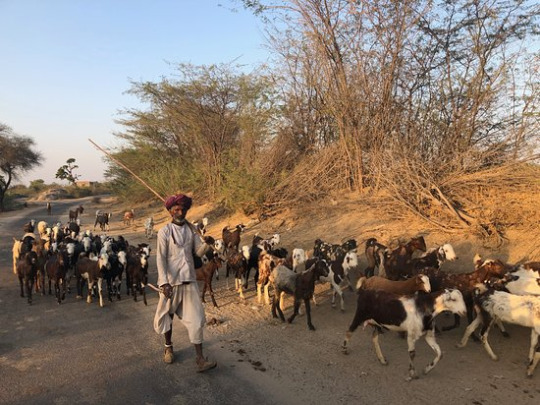
Chickens are usually kept close to stalls and homes. These chickens are not plump and fluffy like most Western chickens, but are quite skinny. Mottled feather colours are usually a result of mixed chicken breeds. In Tamil Nadu, the most common chicken breed is the asil chicken.
Various birds are often seen flying around traffic if they’re not disappearing into the sky, the most common being crows, pigeons and mynahs. (The chart below on the right is not an inexhaustive list of birds; you best search them up yourself.)
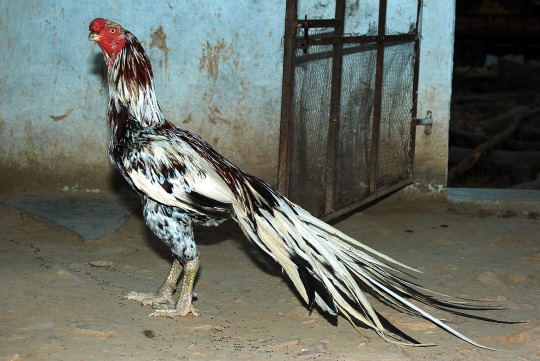
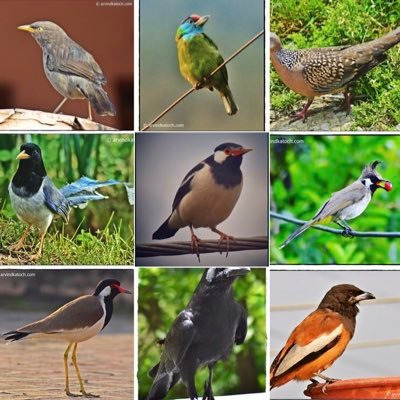
TRANSPORT
There is obviously a huge amount of trucks and lorries and buses. They all have beautiful designs or crazy LEDs or large detailed fluorescent / iridescent stickers that are impossible to ignore, whether it be at high noon or midnight.

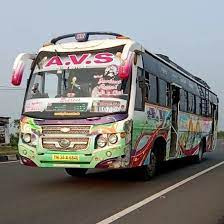
Expanding on that, the most common method of transport are motorcyclse or scooties, cars, and autos.
Also, as expected: traffic is insane. It’s horrible. It’s exhilarating. Western honking is akin to swearing, but here? Honk whenever you want. Honk if you’re happy or if you’re sad. You get a million dollars if you honk. You need to honk. It’s more important than breathing
Similarly, road rules don’t exist. Well, they do, and the Indian government does everything it can to make sure people do follow the rules, but based on the aforementioned honking, most people don't. Everyone just drives. Most bikers and motorcyclists don’t wear helmets. Only a few people wear seatbelts. Cars and motorcycles drive on the wrong side of the road and right into oncoming traffic. The chance of someone dying is 99% but it’s countered by desi stubbornness.

ENVIRONMENT & INFRASTRUCTURE
Houses and buildings are painted different colours!!! Pastel pinks and purples and deep teal hues, either plain colours or decorated with elaborate murals. This also applies to interiors. I reckon it was surprising to a lot of people when they were confronted with Mumbattan's vibrant colours, but honestly: coloured buildings slap, and it's based on the real thing. They are a sight to behold. Couple that with the architecture and oh boy- you've got such a beautiful environment.



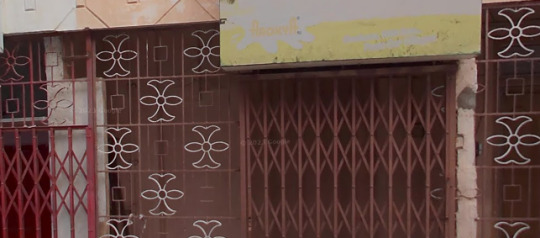
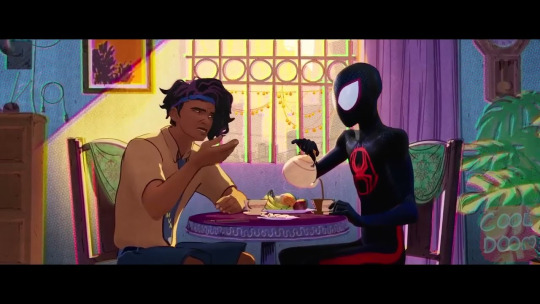


From @jettpack's concept art for Mumbattan buildings

jettpack's concept art of the Mumbattan collider

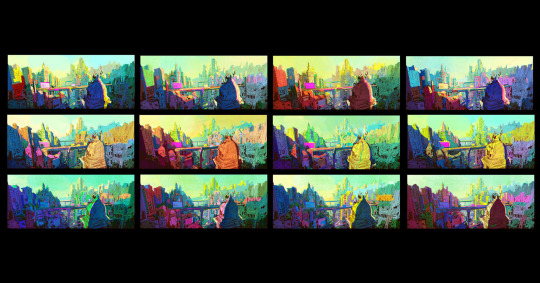
From @chenfelicia's concept and colour keys of Mumbattan
Don't be shy to really immerse in crazy descriptors - that's how you capture the liveliness of cities like Madurai and Mumbai and ultimately, their physical manifestations like Mumbattan.
Funny enough, movie posters and political banners and flyers are EVERYWHERE. They’re huge and take up entire billboards, or congregate along walls so it becomes practically a collage. It's impossible to ignore the image of "Makkal Selvan" Vijay Sethupathi about to beat some poor loser into a pulp with a stick, or the political parties roasting each other on paper with impressive photoshopped graphics.
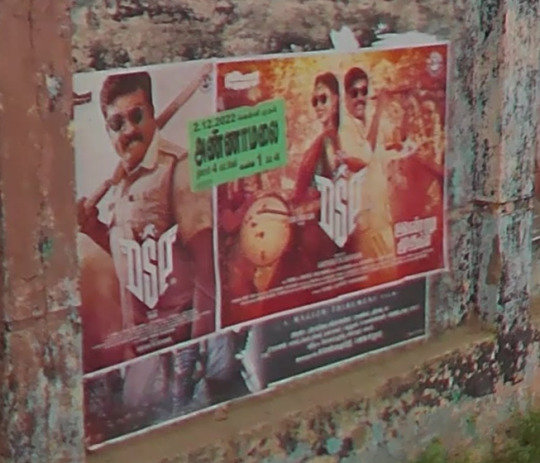
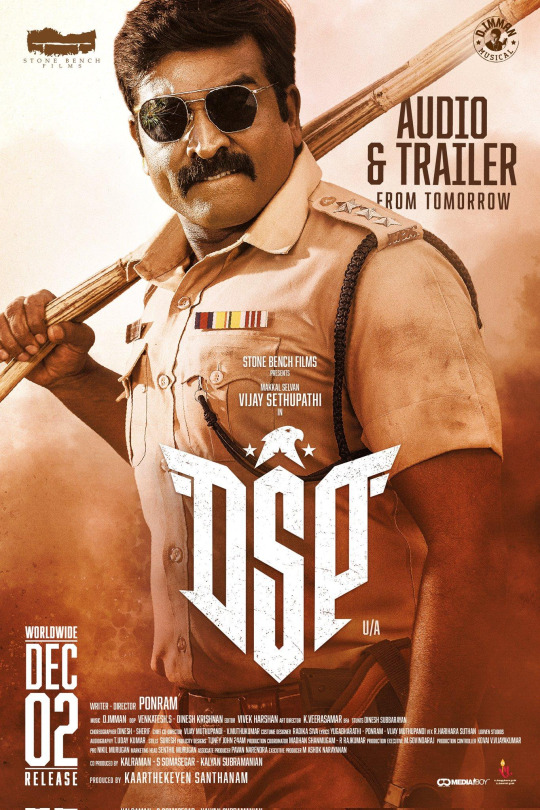
To tie in to the point about transport: there are hundreds of coffee stalls and snack shops and one-of-a-kind food stands. You can’t go 200 metres without running into one, either on the highway or in the city. I remember having jaggery coffee on my first night in India, and guys- it tasted so fucking good. I only wish I can transfer the taste to you. Absolutely splendid.
The climate in India is generally very humid and warm, but that doesn't mean we don't get cooler days; it is obviously cooler on winter nights. Also I've heard from many conflicting sources on India's seasonal weather (probably due to India's geograpghy), so you will have to talk to someone who is from India to really confirm. I've somewhat boiled it down to five seasons:
Summer - May-Jun; very hot (35-45ºC/95-113ºF), characterised by shrinking water bodies and droughts if there aren't any rainfalls; this time is good for plant growth/harvest if you've successfully managed water supplies
Monsoon - Jul-Aug; (34ºC/93ºF) very variable in terms of timing, characterised by torrential rains and floodings; the raining itself probably lodges somewhere in Jun-Sept but the aftereffects are felt long after the rains have stopped
Autumn - Sept-Nov; cooler but humid (25-35ºC/77-95ºF), and generally much drier since it transitions from autumn to winter
Winter - Dec-Feb; much colder, but the extent is dependent on geographic regions (20-25ºC/68-77ºF)
Spring - Mar-Apr; humid (33ºC/91ºF), sudden downpours, only occasionally do you get pleasant weather in this time
PEOPLE AND CULTURE
For some reason, there are still loud speakers blaring out music across the roads and as far as a few city blocks. I honestly thought that that had died out by the time my parents had graduated university, but it still seems like people like hearing music played at 120 decibels.
This is a complicated issue but people are not piss poor. Yes, India is a developing country, and yes there are slums and there are homeless and there are those who are stuck in a horrific sociocultural cycle, but people are rapidly getting into high-paying jobs at much higher rates than before. Overall, India is getting better; do us a favour and not have us be represented by the same poor struggle-riddled Indian stories that Hollywood and Western media is are fond of portraying.
@neptune432: One thing I think it's important to acknowledge though is how your experience in India changes depending on your caste. I feel like most of the indian voices talking online are savarna (I'm not an exception) so this doesn't get brought up as much. It's a complicated issue and one that I don't think non-indians (or savarna indians) should worry about tackling in their work, but it's worth saying because what's assumed to be everyday aspects of indian culture are actually specific to things like caste, class, and what region you're in. ex: in kerala, there are also examples of people eating on banana leaf with lots of vegan food for special occasions (namely during onam). but veganism is heavily tied to brahmanism so most of these people will be savarna. even if they eat meat otherwise, the specific interest in eating vegan for special occassions has clear implications. Though many people of different castes eat meat, it's a practice that gets discriminated against, being treated as barbaric and unclean. this is because of brahmanism and is usually only strictly followed by brahmins. dalits/bahujan usually face the worse treatment for their eating traditions. there's also the fact that hinduism is more of a recent term and a broad umbrella where many different gods and cultures have been put under (and usually done forcefully). a lot of local dieties and specific cultural practices come from outside the vedic traditions of aryans (upper caste north india), but now are treated almost as one thing. ex: kali is a south indian (dravidian) goddess who's still heavily worshipped there and who later got adapted to brahminical traditions. that's also why south indian practices of worship are different from the north and are discriminated against ex: north indians getting angry at the idea of worshipping kali by drinking alcohol and smoking even though it's an older tradition than theirs. these traditions are often connected to dalit/tribal cultures as well, which adds to why these traditions are attacked. Now, I don't feel comfortable with non-indians writing about india in general but I feel it's important to mention these things cos most people don't even realize they're only getting shown certain perspectives. How many people don't even know they're a north/south divide, for example? People are fed narrow viewpoints on India and assume that's everything to know. it's a problem cos that's what the brahminical forces in india want. This is all very general info too and I'm no expert so it's worth more research (like reading what dalits have said on their experiences). I'm not trying to criticize you btw, I just wanted to add some things cos this has been on my mind for a long time now. Couldn't have said it better myself, neptune!! (I barely mentioned it at all lmao) The caste system despite it being "abolished" still defines many traditions within India, and almost always in harmful ways. Like @summer-blues-stuff and I have mentioned in their post A culture post for the girlie pops under the Religion and caste section, it's best to leave the caste and social hierarchy alone even if you've done your research. That doesn't mean you shouldn't talk about it, it's just that people, especially those of non-South Asian decent, have to be extremely careful about it. Introductory resources on the caste system can be found on ABC, Pew Research and The Conversation.
Furthermore, the automatic assumption is that people living in shacks or remote villages have no access to greater populations and resources, which I'm happy to completely disprove. Guys: majority of the people living in my village, a rather remote village, have phones on them. Ranges from iPhones to Androids to good ol' Nokias.
(And, side note: as an Indian, I get amazingly pissed off when people's ringtones are set to maximum volume and play the same famous part of a famous song every time they get a call. Like shut the fuck up. At least quieten down? Please??)
(Also this might be a South Indian thing but Man some people are so entitled. Dudes you do not need to rub your ego into my face. Dudes you can, you know, keep all the cool things you think will get other people jealous out of the public eye. At this point I'm not jealous of what you Have, I'm pissed off at the Audacity To Think You Can Make Me Feel Bad About Myself With The Things That You Have).
Alright. Moving on.
Tiny temples and shrines are everywhere, dedicated to broad-Hinduism deities like Ganesh, Shakthi, or Vishnu; other times, they are shrines built for local deities that protect a particular village. For example, my village dedicated a little plot of water-logged land to a benevolent spirit called Subbamma, where people would leave offerings or place their sick/injured animals at the water's edge so that Subbamma could heal them. These tiny temples are almost always super colourful and amazingly detailed despite their small size
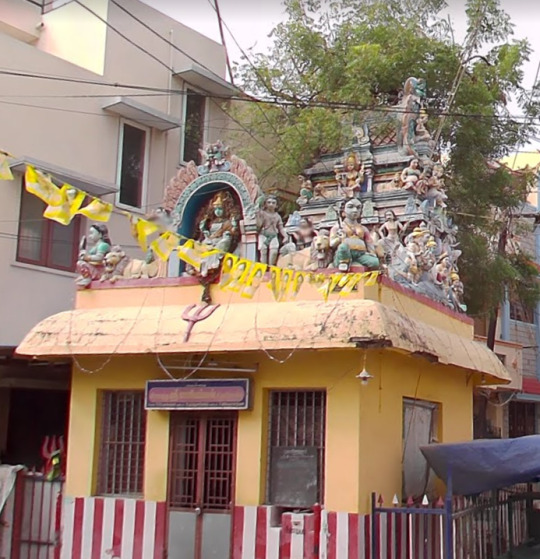
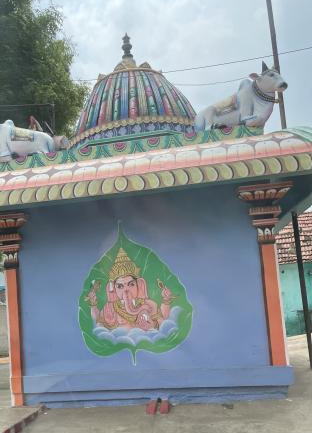
It could be a whole month before a celebration like Diwali but it’s the perfect time to set off hundreds of fireworks and firecrackers. People are just inconsiderate in many ways, it seems.
Some women wear strings of jasmine flowers in their hair. This might be completely regional-based, but most if not all women, ranging from little kids to old ladies, will wear these strings of jasmine in their hair. It's supposed to represent good fortune and beauty, and it smells wonderful.
@esrev-redips: #i usually only visit the north side of india (went to banglore and or chennai once) but im pretty sure most women in mumbai wouldnt wear #flowers in their hair unless they were of an older generation #they dont in new delhi at least and i t h i n k you can compare them but im not sure since i dont live in india either Thank you esrev!!!!! glad to see an old hunch be confirmed!!!

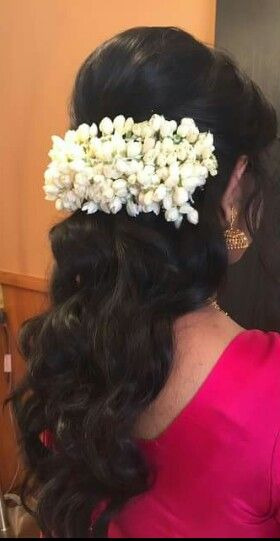
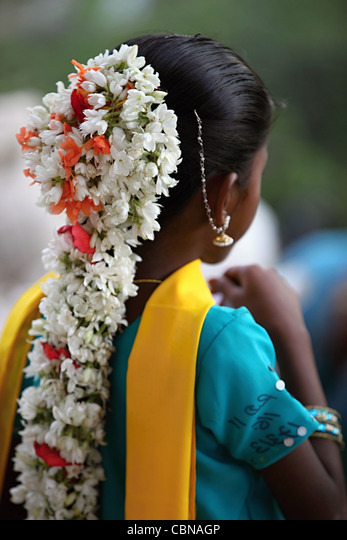
Normally you can wear any type of jasmine, but the common subtypes in Tamil Nadu are ஜாதிமல்லி (jathimalli; "Spanish jasmine"; left) and மல்லிப்பூ (mallipoo; right).
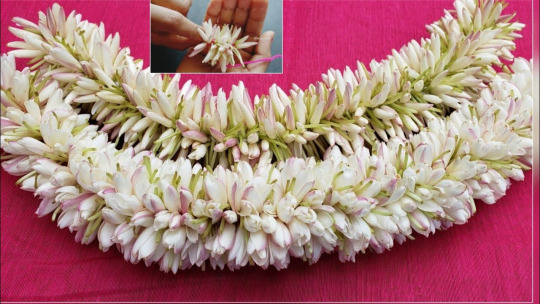
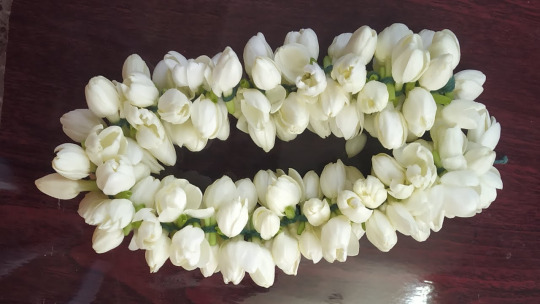
Eating food from a plate made from a banana leaf is more than just an aesthetic, and is often reserved for certain occasions; other times we eat from metal or ceramic plates. I can't vouch for other areas of India but I've been told the reason why banana leaves are predominantly used for large gatherings is because they can signal to diners if the food is rotten or has been poisoned; supposedly the leaf itself starts rotting and releases liquid, but I personally have never seen this happen. But of course, there are also other reasons as to why banana leaves are used (all of which are valid) ranging from being an eco-friendly disposable plate, offloading nutrients into food, or even to make the food taste better. Pick whichever reason you like.
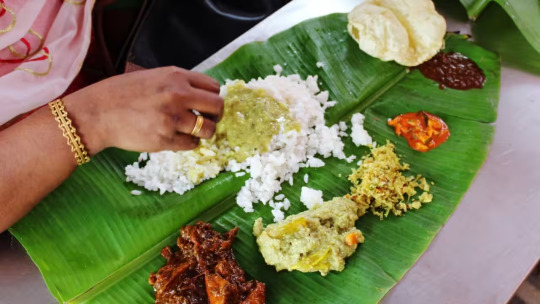
I'm literally so hungry looking at this. (Realises this is a Pavitr thing to say.) Anyway.
FOOD RECS!!!!!!
Reblog with your favourite foods >:) The list will be routinely updated...
JAGGERY COFFEE (from me) - GOOD FUCKING STUFF. ACTUALLY. if you see it.. GET IT IMMEDIATELY
PANI PURI (from @esrev-redips) - #also you forgot to mention the PANI PURI STANDS AHHHHHH YUMYUMYUM | RRRR YOU'RE SO RIGHT. PANI PURI FOR LIFE ACTUALLY.
JASUBEN PIZZA (from @the-witch-forever-lives) - okay this is specific to Ahmedabad | okay but as specific as it may be that sounds and looks delicious??? hello??????
DABELI (from @the-witch-forever-lives) - this too???? also it LOOKS wonderful i need it right now actually
VADA PAV (from @the-witch-forever-lives) - Also Vada pav from Mumbai is so one of a kind | you are absolutely correct. vada pav is truly something magnificent
I think that's about all I can give you right now. This took me a while to type out. Feel free to ask any questions, or if you have anything you would like to add on, like anything I might have glossed over or your favourite desi foods, please do!!! I'll be sure to reblog your addition and update the original post.
The point is that this post can become one of those few other reference posts that artists and writers and other creatives can use if they ever want to make anything related to India, because it's genuinely so cool to see your culture represented so well in popular modern media.
(And in fanfic and fandom. Especially in fanfic and fandom. you have no idea how many times I've gone insane reading a Pavitr-centric fic or reading comments on Pavitr-related posts and it's just outdated ideas and harmful stereotypes and all sorts of sick bullshit, and it's always to the point where I physically have to go outside and bite into a fresh rhizome in order to ground myself. Like damn, people, you need to know things before you start creating)
So uh, I hope this was helpful if not interesting! Happy early Diwali everyone! Knowledge-over-ignorance and all that; hopefully this post does that notion justice!
#pavitr prabhakar#wrote this solely because i wanted more atsv pavitr-centric fics and i need to get that specific immersed-in-india itch scratched#and also because the india i remembered decades ago is definitely not the india i visited last week#wow time flies doesn't it#spider man india#india#writing tips#o wise writer stuff#indian culture#south asian culture#spider man across the spider verse#atsv#across the spider verse#chaipunk#goldenpunk#cultural references#atsv pavitr#agnirambles
223 notes
·
View notes
Text




Lord Krishna ॐ Talon Abraxas
Lord Krishna is one of the most popular Gods in Hinduism. Krishna is considered the supreme deity, worshipped across many traditions of Hinduism in a variety of different perspectives. Krishna is recognized as the eighth incarnation (avatar) of Lord Vishnu, and one and the same as Lord Vishnu, one of the trimurti and as the supreme god in his own right. Krishna is the principal protagonist with Arjuna in the Bhagavad Gita also known as the Song of God, which depicts the conversation between the Royal Prince Arjuna and Krishna during the great battle of Kureksetra 5000 years ago where Arjuna discovers that Krishna is God and then comprehends his nature and will for him and for mankind. In present age Krishna is one of the most widely revered and most popular of all Indian divinities.
Each incarnation of Lord Vishnu on the Earth is with a purpose and to accomplish some definite tasks. Lord Krishna came to the Earth to kill king Kansa and to relieve the people of Braj from his torture and tyranny. Later Krishna participated in the events of the Mahabharata and Lord Krishna’s participation had profound effect on the Mahabharata war and its consequences.
Names of Krishna
The name Krishna originates from the Sanskrit word Kṛṣṇa, which is primarily an adjective meaning “black”, “dark” or “dark blue”. The waning moon is called Krishna Paksha in the Vedic tradition, relating to the adjective meaning “darkening”.
As a name of Vishnu, Krishna is listed as the 57th name in the Vishnu Sahasranamam. Krishna is also known by various other names, epithets and titles, which reflect his many associations and attributes. Among the most common names are Mohan “enchanter”, Govinda, “Finder of the cows” or Gopala, “Protector of the cows”, which refer to Krishna’s childhood in Braj (in present day Uttar Pradesh). Some of the distinct names may be regionally important; for instance, Jagannatha, a popular incarnation of Puri, Odisha in eastern India.
32 notes
·
View notes
Note
so. this happened...
quick disclaimer:
i don't write fanfic about the waves. and i don't actually ship jinny and susan, i just had a "revelation" during a dream: susan has a whole thing about possession/wanting to possess and jinny dances for herself ("the leaf danced in the hedge without anyone to blow it" etc) and like. she def likes the ppl that she calls but. like. "now slackness and indifference invade us", "i also like fair-haired men with blue eyes", etc etc.
so basically: susan wants to possess ppl (shown through her love for bernard bc he is literally unpossessable) and jinny+co (all the dancers) possess each other briefly and then part with indifference.
idk if i showed that well through this but you're literally the only blog ik that likes the waves so. here it is ig
ofc you don't have to read it and i probably made mistakes.
set after they meet Percival - before he dies
“This is not my world,” said Susan. “I peer about like an animal among the bustle of the city that I despise. My eyes are low and close to the ground, the cobblestone, the sharp edges of stiff dress-shoes. As a child I saw beetles in the grass, steady movements of ants across dry dirt; I peered through bushes and screwed injustice and envy into my pocket-handkerchief, even as she cried, ‘My mouth opens too wide and shows too much gum.’ But today I meet her.
“My possessions seem out of reach; the descent of the Tube was a severance, but I will stitch it together with my rough, callused hands that milk the cows and feed the chickens. Still it seems like death, for I am in Jinny’s territory, the ground that she owns as sure as she steps onto it—hollow ground, empty ground. The smell of pine and linoleum is forced into me. With each shop I pass, I see the glazed chalkboards that I have hated. I possess nothing here. I regret coming. With no Rhoda, no Louis, no strange and wandering spirit for whom yearning is all of life, I am the sole thrashing, lonely visitor; I can only continue on with a fisted handkerchief and a destination in mind.
“The world is crisp, clean, full of dress without the fade of wear. I am here, where we gathered as Bernard became engaged to be married, an irrevocable separation from the past; where the swing-door opened and closed as he did not come, and came; where we sent Percival off to India; where I return to meet Jinny—Jinny who is certain, who wears a red dress in the evenings while I sit stitching at home; Jinny whose hands are fair and slender; Jinny who possesses the men that come to her, who gives herself to them for an hour of dance before dropping them like an egg falling cracked on the floor; Jinny who has arrived.”
“When I enter,” said Jinny, “all seems still and stopped. Yet Susan, whose eyes are so bright, watches me with an intensity that I am unaccustomed to. I look at my peers, with whom there is an honourable antagonism; we look with respect, with indifference. Susan’s face assumes a certainty for which I am momentarily unprepared. Change follows my entrance; hands rise to ties, smooth out hair. A woman takes a powder-puff to obliterate her nose. Susan hides her hands, worn and rough like the fabric of her dress. But as strangers return to their plates and guests, I steel myself. I remind myself: my body can open and close at my will alone.
“We return nods, and there is a semblance of the familiar respectful antagonism before her pear-shaped eyes rest on the menu and I realize her assessment is separate from all others. For there is no man, no tall dark-eyed shadow, no fair-haired blue-eyed dancer; and there is no gossip, no stories of the newcomers in green, no woman who danced once and never again, no comments of the man smoking on the balcony whose palm is scarred (‘a blood oath?’ one would say; another, ‘a fight with a mistress?’; another, ‘broken wine glass?’); and Susan is not a stranger on the street for whom I would raise my chin like a peacock, with pride, with confidence, with certainty. Something inside me has morphed in Susan’s presence.
“I order wine, astringent against her plain water; because Susan is plain, all things plain. She would wear a straw hat on a summer day. My wine sits untouched (it is too early, the clock has not struck evening) but she drinks with a surety across the table, faded sleeves beside the clean silk of her napkin in its silver ring. We talk of the weather; of Bernard and Neville, Louis and Rhoda; of Percival in India. She glances at the menu at times, calls the waiter for bread, but when her eyes, which reflect the paleness of fresh milk in September, assess not my appearance but my city-bright eyes, I feel still and stopped. I slam my body shut until her attention is turned to the waiter with the bread, for I will not be possessed by Susan in the cool of this afternoon.”
“The meal continues,” said Susan, “and Jinny eats meagre portions of her plate of roast and buttered bread. I do not press. We are mainly silent, mainly waiting. She calls for dessert without finishing. I decline the slice of vanilla cake and finish the slice of baguette which has grown cold. She uses her fork and knife to cut the slice in small pieces; her mouth, which is precisely red, closes over it expertly. She leaves no crumbs. The sky darkens. Why am I here? I ask myself, although I am no yearning and wandering spirit. It is a thin question, something to be stripped off, a corn husk during harvest season.
“The people among us begin to stand; they begin to leave. Jinny has finished her vanilla cake. We are talking about the weather again. ‘It’s evening,’ says Jinny. I know what Jinny does in the evenings while I sit at home stitching. I rise from my seat; she as well. Her mouth is still painted red. Redder than an apple, a June strawberry. She is precisely drawn; a shining Jinny with a red mouth and a dress that fits around her waist. She traipses through her evening. She tells men to come to her and they follow.
“There is nothing to catch hold of in Bernard—floating over treetops wreathed in phrases of Elvedon. Jinny is solid, and then she is gone; she dances, and then she leaves; she enters, and we change; she and the men she dances with possess each other, and then they part. I cannot possess her. I am in the garden, and Jinny kisses Louis.
“The shops are closing. There are women sweeping the floors and curtains falling closed. There is rain in the air. Jinny’s world shrinks to only one room; where she dances, calls men to her, and drops them like eggs on the floor. But the women are sweeping and the lights are shutting and the sky will rain and the air will swell with wet soil where the root vegetables grow.”
“It is evening,” said Jinny, “but I know Susan has travelled too far to go back so soon. I do not know where we could go. As we leave the restaurant, she turns to head off, into the Tube, away from here. But it has been an hour of cordiality and silence, and I was the one at fault for bringing her here. Wait though, Susan: it is only a mistake if you believe it to be. The shops are closing. Across the street my world is opening. But I will not drag you there.
“It is strange that you are tired, that you would wear a nightgown to pad across your house in, that you shut off your lights in the evening. Come, Susan. I own a room, not to lie in, not to stay in; but I own one. I say to you, ‘Come,’ and you come, but not as a fair-haired man or a dark-eyed dancer; you trail behind in this world of mine, but step with the image of a decisive destination. The streets are lit by street lamps. ‘Come,’ I say.”
“There is rain in the air,” said Susan. “The smell is familiar, curling. I follow Jinny with rain around me, a surety, a certainty. I understand the rain, the clouds heavy with rain; Jinny cannot feel the apprehension of the air, although she walks as if she owns the street she is on. Without the rain I would not have gone. But the streets and roofs will be wetted and I will stand among it all.
“She leads me up the steps of a building; rented-out rooms. One is Jinny’s. It is clear Jinny does not stay here with the intention of it becoming home (even the sturdy reliability of floors and walls cannot possess her permanently) but there are clean, thin dresses hung up: this gold, that red, another shining blue. There is a mirror where she assesses herself, where she says, ‘My mouth opens too wide,’ and paints her mouth red. But there are wood-panelled floors and whitewashed walls. Open the window, Jinny, so I can smell the rain.”
“The window is cool to the touch,” said Jinny. “I cannot smell the rain as Susan can but I feel the chill prickle down my arms, spill onto my skin. When I dance I am warm. My blood rushes through my veins, bright red, lapping at my sides, flushing my insides hot. But Susan is here with her pear-shaped eyes that look at me with neither hate, envy, or desire. I am not in the garden, kissing Louis. Susan is with me but her pocket-handkerchief is not creased in her palm. I can open my body and close my body at will. I am cool to the touch. Susan does not understand signals but when I raise my hand she takes it.”
“Rain curls around me,” said Susan. “Jinny’s hand is warm like her eyes that dance with fire.”
“My legs are silk,” said Jinny, “hers cotton. Her palm is rough against mine and the back of her hand is tan. I have long fingers that are soft and slender. Susan is not a dark-eyed man or a fair-haired one, but when her eyes rise to meet mine, I become like the wax of a candle with a fire lit in my eyes.
“Why did you bring me here? you ask without speaking. I do not know; I am melting, I am flowing. ‘Jinny,’ you say, and I hear you cry with your mother-sewn pinafore, ‘I hate and I love. I desire one thing only.’ But we were children then.
“You do not know how to dance. Your steps are heavy; mine, feather-light. I ripple, swell, flow over you and your heavy steps. We are not children anymore, Susan. You are not burying the school under the ground; I am not winning the game. But you have the reliability of wood-panelled floors and air filled with rain; and my blood is bright red, whipped up, slapping against my ribs. I say to you, ‘Come,’ but I wonder, Will you?”
“I could have loved you,” said Susan. “I could have nailed you to a barnyard door. But I must collect my possessions in a world of my own. I will have a husband and children, Jinny; I will milk the cows and walk through the wheat fields. I will look down the table with familiar bread and a September chill through the open window. I will knock the loaf to assure myself of whether it is baked all the way through. My husband will fix the fence that is rotten. There will be corn-fields, wheat-fields, all mine. That is my world. How could you take me here?
“Your hand is warm as a loaf of bread. You can be sculpted like sourdough before it is raised. Can you be possessed? I feel animalistic in this suddenness. Afterwards, you will say, I like men with fair hair and green eyes. Your eyes break into a thousand lights. My eyes are hard. My handkerchief is fisted in my pocket. There is anger creasing it. I cannot dance. I cannot have you in this false, artificial world of pine and linoleum. I buried the sixpence. I buried the school. I cannot bury you.
“You say, ‘Come,’ and you wonder if I will. You say, ‘Come,’ and I wonder if you’ll drop me like an egg falling cracked on the floor. You say, ‘Come,’ and I do not.”
NOWWW WAIT A MINUTE……. WHY IS THIS FIRE…..
#dude this like. rules.#did Not expect to open tumblr to stylistically accurate lesbian the waves fanfiction in my inbox but man I am not complaining#feel like we need to be friends or something this is so so cool + clever + beautiful 😭😭 thank u for sharing this genuinely#asks#anon#the waves#fav#the waves anon
3 notes
·
View notes
Text
Happiness Charge Pretty Cure! Characters as Mobians

🩷💘💕🪞💙👑🪶🪞💛🍯☘️🪞💜🔮⭐️
Cures:
Megumi Aino/Cure Lovely - Magenta Sheep/Hot Pink Sheep
As Cure Lovely, she represented by hearts, and respectively has the power of love
Her Form Changes are Cherry Flamenco and Lollipop Hip Hop
Hime Shirayuki/Cure Princess - Marine Hedgehog/Pastel Blue Hedgehog
She is the princess of the Blue Sky Kingdom
As Cure Princess, she represented by circles and feathers
Her Form Changes are Sherbet Ballet and Macadamia Hula Dance
Yuko Omori/Cure Honey - Caramel Brown Songbird/Blonde Songbird
As Cure Honey, she represented by clovers
Her Form Changes are Popcorn Cheer and Coconuts Samba
Iona Hikawa/Cure Fortune - Dark Purple Porcupine/Bright Lavender Porcupine
As Cure Fortune, she represented by stars
Her Form Changes are Pine Arabian and Anmitsu Komachi
Faires:
Ribbon - Cure Chao (Hero Chao)
Hime's mediator
Cure Lovely and Cure Princess' fairy partner
Glasan - Cure Chao (Neutral Chao)
Cure Fortune's fairy partner
Magical Allies:
Blue - Light Blue Hippogriff (God)/Light Blue Eagle (Mobian)
Is the god of Earth and the spirit-like deity of Blue Sky Kingdom. He gives the power to the Pretty Cures of Happiness Charge and he gives a pink Love Crystal to Hime so she can find a partner. While Megumi and Hime fight the Saiarks and the Phantom Empire, Blue travels across the world and recruits Pretty Cures from several nations to fight against Queen Mirage and the Phantom Empire's invasion. He and Red are gods and also siblings.
Bomber Girls Pretty Cure - Texas, USA, Pretty Cure team with a theme of the good ol' days of the American Wild West.
Blue Cure - Red Rattlesnake
Pink Cure - Blonde Bald Eagle
Yellow Cure - Silver Buffalo
Wonderful Net Pretty Cure - Mumbai, India, Pretty Cure team with a Technology theme.
Orange Cure - Orange Bengal Tiger
Green Cure - Green Elephant
Cure Art - Blonde Chicken
Paris, France, Pretty Cure with a theme of art and rainbows.
Cure Nile - Blue Steppe Eagle
Cairo, Egypt, Pretty Cure with a water theme.
Ohana/Cure Sunset - Black Monk Seal/Orange Monk Seal
Apart of the Hawaii, USA, Pretty Cure team with a Sunsets theme.
Twin sister to Olina.
Olina/Cure Wave - Black Monk Seal/Turquoise Monk Seal
Apart of the Hawaii, USA, Pretty Cure team with a Wave theme.
Twin sister to Ohana.
Aloalo - Cure Chao (Hero Chao)
Cure Sunset and Cure Wave's fairy partner
Cure Continental - Blonde Lioness
London, England, Pretty Cure with a Alice in Wonderland theme.
Cure Katyusha - Eurasian Brown Bear
Moscow, Russia, Pretty Cure.
Cure Southern Cross - Red Kangaroo
Sydney, Australia, Pretty Cure.
Cure Gonna - Dirty Blonde Italian Wolf
Apart of the Rome, Italy, Pretty Cure team.
Twin sister of Cure Pantaloni.
Cure Pantaloni - Dirty Blonde Italian Wolf
Apart of the Rome, Italy, Pretty Cure team.
Twin sister of Cure Gonna.
Matador Pretty Cure - Purple Cow
Madrid, Spain, Pretty Cure with a Bullfighter theme.
Villians:
Red/Deep Mirror - Griffin (God)/Red Eagle (Modian/Deep Mirror)
Is the real evil once it is revealed that he is the one who controlled Mirage. He went under the alias Deep Mirror to serve as Queen Mirage's adviser, who locates things for her while secretly controlling her.
He turned out to be Red Planet's god and the younger brother of Blue.
His Saiarks have red scarves.
Queen Mirage/Cure Mirage - Blonde Nine Tailed Fox (Evil)/Black Fox (Mobian)/Coral Red Two Tailed Fox (Cure)
Is the ruler of the Phantom Empire.
Before she became evil, she was a shrine maiden in Pikarigaoka and a Cure named Cure Mirage.
She was once in love with Blue, but his feelings were not as strong because he had many duties as a deity and could not fall in love with a regular human, breaking her heart. She then became evil, rejecting all love and happiness in the world.
Her Saiarks have blue scarves and creates a fog and utter chaos.
Phantom/Cure Unlovely/PhanPhan - Iwakuni White Snake/Dark Pink Sheep/Cure Chao (Dark Chao)
Is the elite general of the Phantom Empire.
He is courageous and unruffled and refers to himself as "The Pretty Cure Hunter."
He is incredibly loyal to Queen Mirage.
He defeated many Pretty Cures worldwide, including Cure Tender, Cure Fortune's elder sister.
When he purifyed it is revealed that he is the former fairy partner of Mirage named PhanPhan, who was brainwashed by Red and turned into Phantom.
His Saiarks have white scarves and spread purple crystals and mines throughout the area.
Oresky - Gila Monster
A general of the Phantom Empire.
He is part of the Oresky Trio with Hosshiwa and Namakelder, serving as their leader.
His Saiarks have yellow scarves and create barren wastelands and dark clouds.
Namakelder - Light Green Grasshopper (Evil)/Dark Green Grasshopper (Good)
A general of the Phantom Empire.
His Saiarks have green scarves and spread mold across the area.
Hosshiwa - Light Blue Poodle (Evil)/Dark Blue Poodle (Good)
A general of the Phantom Empire.
She is a spoiled, wealthy lady who desires everything, especially her beloved sweets.
Her Saiarks have pink scarves and turn the area into one with chocolate, cakes and other sweets and desserts.
Madam Momere - Purple Arctic Fox
A general of the Phantom Empire.
She is a flamboyant lady who loves it when her opponents argue among each other.
She fights the Alo~ha Pretty Cure in Hawaii.
Her Saiarks have purple scarves and freeze the area around them.
Family:
Masaru Aino - Brown Sheep
Megumi’s father.
Kaori Aino - Fandango Pink Sheep
Megumi's mother.
Her health is poor, though it appears to be improving.
King of the Blue Sky Kingdom - Dark Blue Hedgehog
Hime’s father and the king of the Blue Sky Kingdom.
Queen of the Blue Sky Kingdom - Marine Hedgehog
Hime’s mother and the queen of the Blue Sky Kingdom.
Takeo Omori - Brown Wolf
Yuko’s father.
Owner of a lunchbox restaurant, Omori Rice.
Yoko Omori - Brown Songbird
Yuko’s mother.
Co Owner of a lunchbox restaurant, Omori Rice with her husband.
Ai Omori - Caramel Brown Wolf
Yuko’s older sister.
Helps out at her family’s lunchbox restaurant, Omori Rice.
Yonezo Omori - Gray Wolf
Yuko’s grandfather.
He runs a Rice Farm with his wife Ine.
Ine Omori - Brown Frog
Yuko’s grandmother.
She runs a rice farm with her husband Yonezo.
Maria Hikawa/Cure Tender/Dark Tender - Black Tenrec/Grayish-Blue Tenrec/Purple Tenrec with Butterfly wings
Iona's older sister.
When battling against Phantom, with Iona watching them, she was defeated after taking an attack from Phantom intended for Iona.
Later Iona is brainwashed by Queen Mirage and turned into Dark Tender.
Supporting People:
Seiji Sagara - Honey Badger (has brown hair)
Seiji is Megumi's neighbor, and childhood friend.
Seiji loves martial arts and diligently trains every day at the Hikawa Style Karate Dojo.
He harbors a secret crush on Megumi.
Seiji gets brainwashed by Red in order to defeat the Happiness Charge! Cures and Blue but is ultimately saved by them.
Hiroko Sagara - Leopard (has brown hair)
Is Seiji's mother.
Mao Sagara - Leopard (has brown hair)
Is Seiji's younger sister.
Miyo Masuko - Ring-Tailed Lemur
Is a reporter. She is reporting about Japan and other countries' Pretty Cures.
Izumi - Sky Magenta Deer
She is the teacher for Megumi's class in Pikarigaoka Middle School.
——————————————————————————————————
Previously: ♥️♦️♠️♣️ | Next: 👸👑
#sonic the hedgehog#pretty cure#precure#happiness charge precure#crossover#sonicure#Jewel Sonicure AU#information#characters#change in species#cure lovely#cure princess#cure honey#cure fortune#ribbon#glasan#fairies#magic creatures#villians#family#minor character#sth au#mobian
3 notes
·
View notes
Text
Rhythms of Mithila: The Spirit of Madhubani Art
Madhubani art, also known as Mithila painting, is one of the most celebrated forms of traditional Indian folk art. Originating from the Mithila region, which spans parts of Bihar, India, and Nepal, this art form is renowned for its unique style, intricate detailing, and vibrant use of colors. The name "Madhubani" translates to "forest of honey," which reflects the rich cultural and natural environment that inspires these artworks.
Historical Background
The origins of Madhubani art are deeply rooted in Indian mythology and history. It is believed that this art form dates to the time of the Ramayana, an ancient Indian epic. According to legend, King Janak of Mithila commissioned artists to create paintings on his daughter Sita's wedding to Lord Rama. This royal patronage helped establish the tradition of creating auspicious images to mark special occasions, a practice that continues to this day.
Traditionally, Madhubani paintings were made on the walls of homes during festivals, rituals, and important life events such as weddings and births. These paintings served as an expression of devotion, a means of preserving cultural narratives, and a way of bringing good fortune. Over time, the medium expanded from walls to cloth, paper, and canvas, making the art more accessible and portable.
Techniques and Materials*
Tools and Materials:
Madhubani art is characterized by its use of simple tools and natural materials. Artists traditionally use fingers, twigs, brushes, matchsticks, and even nib pens to create intricate designs. The natural pigments and dyes used in these paintings are derived from a variety of sources. For instance, yellow is obtained from turmeric, blue from indigo, red from the Kusum flower or red sandalwood, green from leaves, and black from burnt rice. Cow dung and mud are often mixed to prepare the base of the wall paintings, providing a natural texture and background.
Techniques:
The technique involves outlining the designs with bold lines using a mixture of cow dung and mud or black from burnt rice husk. This is followed by filling the spaces with bright, vibrant colors. The paintings often feature a double line border filled with intricate patterns and motifs such as flowers, animals, and geometric shapes. The figures in the paintings are typically depicted in profile, and the faces are drawn with elongated eyes, which is a distinctive feature of this art form.
Madhubani art does not leave any empty space in the composition; every inch is filled with intricate patterns and symbols. This technique of filling the entire space is known as Kachani or Bharni.The detailing and the use of geometric patterns are not just aesthetic choices but also hold cultural and symbolic meanings, reflecting the artists' connection to their cultural heritage.
Styles of Madhubani Art
Madhubani art is not monolithic; it encompasses several distinct styles, each with its own characteristics and thematic focus. The primary styles include:
Kachani Style:
Kachani style of Madhubani painting is style which comes from the Kayastha community by its intricate line work and fine detailing. Kachani is primarily monochromatic, using a minimal palette with black and white being predominant. This style focuses more on the detailing of the figures and the use of fine lines to create patterns. It often represents scenes from nature and daily life.

2. Bharni Style:
The Bharni style is known for its bold, vibrant use of colors and the depiction of mythological figures, nature, and animals. Traditionally practiced by Brahmin women, this style often portrays Hindu deities like Krishna, Rama, Durga, and Saraswati. The emphasis is on filling the central subject with solid colors, while the background may be decorated with intricate patterns.

3. Tantrik Style:
The Tantrik style is heavily influenced by tantric symbolism and motifs. It involves the depiction of tantric deities and yantras (geometric diagrams used in worship). This style is spiritual and esoteric, often featuring complex and abstract patterns that are rich in symbolic meaning.

4. Godna Style:
The Godna style is inspired by traditional tattoo patterns. This style incorporates symbols and motifs that are culturally significant and often linked to social beliefs and practices. It is characterized using repetitive patterns and motifs such as flowers, animals, and geometric shapes.

5. Kohbar Style:
The Kohbar style is specifically associated with marriage rituals. These paintings are created on the walls of the nuptial chamber and depict themes related to love, fertility, and prosperity. The central motif often includes a lotus flower, symbolic of fertility, surrounded by fish, birds, and other auspicious symbols.

Themes and Motifs
Madhubani paintings are rich in symbolism and cultural narratives. The themes can vary widely, but they often revolve around mythology, nature, and everyday life. Common motifs include:
- Mythological Figures: Depictions of Hindu gods and goddesses, such as Lord Krishna with Radha, Lord Rama with Sita, and various forms of the goddess Durga, are prevalent. These figures are often portrayed in vibrant, dynamic compositions that narrate stories from Indian epics and scriptures.
- Nature and Animals: The natural world is a significant inspiration in Madhubani art. Trees, flowers, birds, and animals like elephants, peacocks, and fish are commonly featured. These elements are not just enhancing but are also infused with cultural and spiritual symbolism. For example, the fish symbolizes fertility and prosperity, while the peacock represents beauty and love.
- Social and Cultural Practices: Madhubani art also captures scenes from daily life, such as agricultural activities, festivals, and social gatherings. These depictions provide a glimpse into the cultural practices and traditions of the Mithila region.
- Abstract and Symbolic Patterns: Geometric patterns, tantric symbols, and abstract designs are also a part of Madhubani art. These elements often carry deeper meanings and are used to convey philosophical and spiritual concepts.
Cultural Significance
Madhubani art is not just an artistic expression; it is a vital part of the cultural and social fabric of the Mithila region. The art form is deeply intertwined with the community's rituals, festivals, and social practices. For instance, the Kohbar paintings are an integral part of wedding ceremonies, symbolizing blessings for a happy and prosperous married life. Similarly, paintings of deities are created during festivals to invoke divine blessings.
The art form also serves as a medium for preserving and transmitting cultural knowledge and values. Through the depictions of mythological stories and traditional practices, Madhubani art helps keep the cultural heritage of the Mithila region alive.
Modern Adaptations and Global Recognition
In recent years, Madhubani art has acquired global appreciation and gratitude. The art form has transcended its traditional boundaries and found new expressions in contemporary contexts. Artists are now creating Madhubani-inspired designs on textiles, pottery, home decor items, and even fashion accessories. The use of modern materials and techniques has also expanded the scope of this art form.
The Indian government and various non-governmental organizations have played a crucial role in promoting Madhubani art. Initiatives such as exhibitions, workshops, and cultural exchange programs have helped bring Madhubani artists into the limelight. Additionally, the art form has found a place in international art markets, with collectors and art enthusiasts from around the world appreciating its unique aesthetic and cultural depth.
Economic and Social Impact
The commercialization of Madhubani art has provided a significant source of income for the artists, many of whom are women from rural backgrounds. This economic empowerment has had a positive impact on the community, enabling better access to education, healthcare, and other resources. Moreover, the recognition of Madhubani art on global platforms has instilled a sense of pride and cultural identity among the artists and their communities.
Challenges and Preservation Efforts
Despite its popularity, Madhubani art faces challenges, including the risk of losing traditional techniques and motifs to modernization. The younger generation's inclination towards urban life and modern professions has led to a decline in the number of traditional artists. Additionally, the influx of synthetic materials and commercialization has sometimes compromised the authenticity and quality of the artwork.
To address these challenges, several organizations and art enthusiasts are working towards preserving the traditional aspects of Madhubani art. Efforts include documentation of traditional techniques, promotion of natural dyes, and providing training and support to upcoming artists. Educational programs and workshops are also conducted to create awareness and appreciation for this art form among the younger generation.
Conclusion
Madhubani art is a timeless expression of cultural heritage, artistic excellence, and social narratives. It is a testament to the rich cultural tapestry of the Mithila region and an invaluable part of India's artistic legacy. As this art form continues to evolve and adapt to modern times, it retains its essence and continues to inspire and captivate audiences worldwide. The ongoing efforts to preserve and promote Madhubani art ensure that this beautiful tradition will continue to thrive and enrich the cultural landscape for generations to come.
2 notes
·
View notes
Text
Ask any Jewish Indian Iraqi, or anyone descended from these lands, about their memories of agar agar jello and they will nostalgically recall it being served at family gatherings. From bar mitzvahs to Shabbat tables and everything in between, you will be told of the brightly colored sweets flavored with rose water and decorated with almonds, pistachios and sometimes fruit completing any meal or taking pride of place on a buffet.
The jello are named after a food thickener called agar agar that has the same gelatinous property of gelatine, but is made from seaweed instead of animal collagen. This is easily available in specialist Indian stores or on Amazon. Before kosher gelatine was widely available, agar agar allowed observant Jews to make these brightly coloured sweets. As they can be made with cow milk or pareve nut milk, they were considered the perfect end to any meal. Plus, back in India, not everyone had access to refrigeration, so agar agar’s fast setting time at room temperature was an advantage.
The fast-acting agar agar means that these jello do not take long to make, but it is customary to serve many varieties on the same plate, which can be time consuming! Pink, green, white and clear colors (dyed with a little food coloring) are traditional, but yellow and blue are sometimes used. Some cooks also served intricately layered jello, formed by leaving one layer to set before gently pouring on another color and so on, creating a vibrant zebra pattern. Sometimes, the finished sweets are dusted in icing sugar, giving the appearance of Turkish delight. My husband, whose parents came from India, has childhood memories of walking around the buffet table when no one was looking and licking the icing sugar off before placing them back on the tray.
I served agar agar jello recently at a family gathering and loved the nostalgia that was evoked. As I walked around the room, I treasured hearing the stories that each guest —many of whom grew up eating them in India — recalled of days gone by. I will certainly be keeping them as a regular on my table.
You can make this dessert with agar agar powder or seaweed strands known as China grass, which have been left to soak beforehand. This does take some time, but then it is simply a case of boiling the powder or strands in milk or water with sugar to form the base of the jello, and takes only a few minutes. Note that the texture of this jello is slightly firmer than the jello we are familiar with today.
Note: The jello will keep for a week in an airtight container in the refrigerator — if they last that long.
1 note
·
View note
Text
About Lord Krishna
Krishna is a major deity in Hinduism, widely revered as the eighth avatar of Vishnu and also as the Supreme God in his own right. He is central to many Hindu traditions and is worshipped across various cultures in India and beyond. Here is a comprehensive overview of Krishna:
Key Aspects of Krishna:
Birth and Early Life:
Birthplace: Krishna was born in Mathura, in a prison cell where his parents, Vasudeva and Devaki, were imprisoned by Devaki's brother, King Kansa.
Birth Event: Krishna's birth is celebrated as Janmashtami. According to mythology, he was born during a tumultuous period when the earth was overburdened by evil rulers.
Childhood: Krishna was taken to Gokul, where he was raised by his foster parents, Nanda and Yashoda. His childhood is famous for his playful pranks, such as stealing butter and playing with the Gopis (cowherd girls).
Youth and Adventures:
Miracles and Feats: Krishna's youth is filled with numerous miraculous feats, such as lifting the Govardhan Hill to protect the villagers from torrential rains and subduing the serpent Kaliya.
Role in Mahabharata: Krishna played a crucial role in the Mahabharata, particularly in the Kurukshetra War. He was the charioteer and guide for the Pandava prince Arjuna.
Teachings and Philosophy:
Bhagavad Gita: One of the most important texts in Hindu philosophy, the Bhagavad Gita, is a conversation between Krishna and Arjuna. It addresses key philosophical and theological issues and outlines the paths to righteousness and devotion.
Teachings: Krishna's teachings emphasize Dharma (duty/righteousness), Bhakti (devotion), and Karma (action).
Worship and Festivals:
Forms of Worship: Krishna is worshipped in various forms, including as a mischievous child (Bal Krishna), a divine lover (Shri Krishna), and a wise king (Dwarkadhish).
Festivals: Key festivals include Janmashtami (celebrating his birth) and Holi (the festival of colors, which has connections to Krishna's playful nature).
Iconography and Depictions:
Appearance: Krishna is often depicted with blue or dark skin, playing a flute (symbolizing divine music and love), and wearing peacock feathers in his crown.
Symbols: Common symbols associated with Krishna include the flute, the cow, and the lotus flower.
Influence and Legacy:
Cultural Impact: Krishna has a profound influence on Indian culture, art, music, and literature. His stories are recounted in texts like the Bhagavata Purana and the Mahabharata.
Global Impact: Krishna's teachings and philosophy have also influenced global spirituality, with movements like the International Society for Krishna Consciousness (ISKCON) promoting his message worldwide.
Krishna's legacy continues to inspire millions of devotees and has a lasting impact on spiritual, cultural, and social aspects of life.
4 notes
·
View notes
Text
more modern On The Run AU
legato: vash the stampede was spotted purchasing a plane ticket to Indiana we will be waiting at the airport for him when he arrives
knives: excellent work
*later at the Indiana airport*
Meryl, on the phone: what happened vash we’ve been waiting for hours for you to show up! If we hang out here any longer we’ll finally be on your list of known associates
Vash: I messed up
Meryl: big surprise. how?
*Vash texts a picture of him looking confused there are multiple cows in the background*
Meryl: is that INDIA
Millie: that guy who had five refills of tea finally stopped yelling at the guy with blue hair
Meryl: I’m on the phone, millie!
Millie: now that poor blue haired guy is crying and ordering a lot of Häagen-Dazs
Meryl: how did you even get there vash you don’t even have a passport! you’re on the no-fly list!
*vash texts her a selfie. he is wearing an obviously fake mustache*
Meryl, gritting her teeth: that in no way answers my question
Millie: now he’s going to the cinnabon I hope he doesn’t make himself sick
#trigun#trigun on the run au#a dozen sporks speaks#I have seen so many Häagen-Dazs and cinnabons in airports#anyway the person in the notes of another post who suggested vash is the indiana/india guy#what's it like to have such a smart brain
14 notes
·
View notes
Text
Holidays 7.14
Holidays
Bastille Day (France)
Beh Deinkhlan (Meghalaya, India)
Black Country Day (UK)
Comedy Celebration Day
Corkboard Day
Drukpa Tshechi (Sikkim, India)
Emmeline Pankhurst Day (UK)
Fete Nationale (Guadaloupe, Mayotte, New Caledonia, Reunion, Saint Barthelemy, Saint Martin, Saint Pierre et Miquelon, Wallis and Futuna)
Hondurans’ Day (Honduras)
International Non-Binary People’s Day
International Nude Day
International Sister Cities Day
Lá Cuimhneacháin Náisiúnta (Republic of Ireland)
Mad Pride Day
National Be Nice to Bugs Day
National Break Free From the Big Three Day (Bad Habits, Relationships & Stale Mobile Plans)
National Car Wash Day
National Day of Remembrance for Victims of Honor Based Abuse & Forced Marriage (UK)
National Joey Day
National La Chancla Day
National Marco Day
National Nude Day (New Zealand)
National Psychologist Appreciation Day
National Reese Day
National Tape Measure Day
Pandemonium Day
Quatorze Juillet (France)
Sage Plant Day (French Republic)
Shark Awareness Day
Silver Day (South Korea)
SpongeBob Day
Sunflower Day (Japan)
Tape Measure Day
Unaine Day (Elderly Women’s Day; Kiribati)
Victims of the Nice, France Attack Day
Victoria Day (Sweden)
World Chimpanzee Day
World Orca Day
Food & Drink Celebrations
International Macaroni & Cheese Day
Macaroni Day
M&Ms Argument Day
National Grand Marnier Day
National Mac and Cheese Day
Roasted Chicken Day
2nd Friday in July
Collector Car Appreciation Day [2nd Friday]
Kebab Day [2nd Friday]
Kilburn Feast begins (Yorkshire, England) [2nd Friday thru Sunday]
National Motorcycle Day [2nd Friday]
Sea Festival begins (Jūras Svētki Sākas; Latvia) [2nd Friday]
Wayne Chicken Show begins [2nd Friday thru Sunday]
White Cloud’s Birthday & Tatanka (Bison) Festival begins (North Dakota) [2nd Friday thru Sunday]
World Kebab Day [2nd Friday]
Worldwide Art Day [2nd Friday]
Independence Days
Ijivate of Rikuchar (Declared; 2015; subsequently dissolved) [unrecognized]
Montenegro Statehood Day Holiday (Montenegro)
Republic Day (Iraq)
Feast Days
Birthday of Osiris (Egyptian God of Agriculture)
Boniface of Savoy (Christian; Saint)
Bona-Venture (Christian; Saint)
Camillus of Lellis (Roman Catholic Church, except in the United States)
Cow Appreciation Day (Pastafarian)
Deusdedit of Canterbury (Christian; Saint)
Ellegua’s Day (Pagan)
St. Ferdinand III (Positivist; Saint)
First Sermon of Lord Buddha (Bhutan)
Gaspar de Bono (Christian; Saint)
Goat Appreciation Day (Pastafarian)
Gustav Klimt (Artology)
Humphrey Bogart Day (Church of the SubGenius; Saint)
Idus of Leinster (Christian; Saint)
John Keble (Church of England)
Kateri Tekakwitha (a.k.a. Lily of the Mohawks; Christian; Saint)
Libertus (Christian; Saint)
Matariki (Maori New Year; New Zealand)
Nachi Himatsuri (Fire Festival; Japan)
Nicodemus of the Holy Mountain (Christian; Saint)
Procopius (Christian; Saint) [Czech Republic]
Samson Occom (Episcopal Church (United States))
Whamop the Rental Magician (Muppetism)
Lucky & Unlucky Days
Sensho (先勝 Japan) [Good luck in the morning, bad luck in the afternoon.]
Umu Limnu (Evil Day; Babylonian Calendar; 32 of 60)
Premieres
Anchor’s Aweigh (Film; 1945)
The Big Sick (Film; 2017)
The Blair Witch Project (Film; 1999)
Brazil, by Jimmy Dorsey (Song; 1939)
The Deathly Hallows, by J.K. Rowling (Novel; 2007) [Harry Potter #7]
Easy Rider (Film; 1969)
The Flying Mouse (Disney Cartoon; 1934)
For Whom the Bell Tolls (Film; 1943)
Foul Play (Film; 1978)
Gunpowder Milkshake (Film; 2021)
Horehound, by The Dead Weather (Album; 2009)
How to Stuff a Wild Bikini (Film; 1965)
Johnny Bravo (Cartoon Series; 1997)
Licence to Kill (US Film;1989) [James Bond #16]
Mission: Impossible — Dead Reckoning Part One (Film; 2023)
Muppets from Space (Film; 1999)
The Pride of the Yankees (Film; 1942)
The Stan Freberg (Radio Series; 1957)
Venus, by Shocking Blue (Song; 1969)
War for the Planet of the Apes (Film; 2017)
The Wearing of the Grin (WB LT Cartoon; 1951)
When Harry Met Sally (Film; 1989)
X-Men (Film; 2000)
Today’s Name Days
Goswin, Kamilus, Roland (Austria)
Kamilo, Marcelin, Miroslav (Croatia)
Karolína (Czech Republic)
Bonaventura (Denmark)
Joel, Joosua (Estonia)
Aliisa, Alisa (Finland)
Camille (France)
Roland, Camillo, Goswin (Germany)
Akylas, Nikodemos, Nikodimos (Greece)
Ors, Stella (Hungary)
Camillo, Giusto (Italy)
Loreta, Oskars, Ritvars, Selgars (Latvia)
Eigilė, Libertas, Vydas (Lithuania)
Solfrid, Solrun (Norway)
Bonawentura, Damian, Dobrogost, Franciszek, Izabela, Kosma, Marceli, Marcelin, Marcelina, Stella, Ulrych, Ulryk, Ulryka (Poland)
Angelina (Russia)
Kamil (Slovakia)
Camilo (Spain)
Folke (Sweden)
Priscilla (Ukraine)
Alton, Camden, Cameron, Camron, Camryn, Kameron, Kamryn, Ventura (USA)
Cami, Camilla, Camile, Camille, Camillus, Camilo, Came, Kaamil, Kami, Kamil, Kamila, Kamilla, Kamille (Universal)
Today is Also…
Day of Year: Day 195 of 2024; 170 days remaining in the year
ISO: Day 5 of week 28 of 2023
Celtic Tree Calendar: Tinne (Holly) [Day 5 of 28]
Chinese: Month 5 (Wu-Wu), Day 27 (Guide-You)
Chinese Year of the: Rabbit 4721 (until February 10, 2024)
Hebrew: 25 Tammuz 5783
Islamic: 25 Dhu al-Hijjah 1444
J Cal: 15 Lux; Oneday [15 of 30]
Julian: 1 July 2023
Moon: 9%: Waning Crescent
Positivist: 27 Charlemagne (7th Month) [St. Ferdinand III]
Runic Half Month: Ur (Primal Strength) [Day 1 of 15]
Season: Summer (Day 24 of 94)
Zodiac: Cancer (Day 24 of 31)
Calendar Changes
July (a.k.a. Quintilis or Iulius; Julian Calendar) [Month 7 of 12]
Ur (Primal Strength) [Half-Month 14 of 24; Runic Half-Months] (thru 7.28)
2 notes
·
View notes
Text
Animal emoji means
🐵Monkey face
🐒Monkey
🦍Gorilla
🦧Orangutan
🐶Dog face
🐕Dog
🦮Guide dog
🐕🦺Service dog
🐩Poodle
🐺Wolf face
🦊Fox face
🦝Raccoon face
🐱Cat face
🐈Cat
🐈⬛Black cat
🦁Lion face
🐯Tiger face
🐅Tiger
🐆Leopard
🐴Horse face
🐎Horse racing
🦄Unicorn face
🦓Zebra
🦌Deer
🦬Bison
🐮Cow face
🐂Ox
🐃Water buffalo
🐄Cow
🐷Pig face
🐖Pig
🐗Boar face
🐽Pig nose
🐏Ram
🐑Sheep
🐐Goat
🐪Dromedary
🐫Camel
🦙Llama
🦒Giraffe
🐘Elephant
🦣Mammoth
🦏Rhino
🦛Hippopotamus
🐭Mouse face
🐁Mouse
🐀Rat
🐹Hamster face
🐰Rabbit face
🐇Rabbit
🐿Squirrel
🦫Beaver
🦔Hedgehog
🦇Bat
🐻Bear face
🐨Koala face
🐻❄️Polar bear face
🐼Panda face
🦥Sloth
🦦Otter
🦨Skunk
🦘Kangaroo
🦡Badger
🦃Turkey
🐔Chicken face
🐓Rooster
🐣Hatching chick
🐥Chick
🐦Blue bird
🐧Penguin
🕊Dove
🦅Eagle
🦆Duck
🦢Swan
🦉Owl
🦤Dodo
🦩Flamingo
🦚Peacock
🦜Macaw
��Frog face
🐊Crocodile
🐢Turtle
🦎Lizard
🐍Snake
🐲Dragon face
🐉Dragon
🦕Sauropod
🦖T rex
🐳Spouting whale
🐋Whale
🐬Dolphin
🦭Seal
🐟Tuna
🐠Coral fish
🐡Pufferfish
🦈Shark
🐙Octopus
🦀Crab
🦞Lobster
🦐Shrimp
🦑Squid
🐚Shell
2 notes
·
View notes
Text
Pichwai: Paintings from the Gates of Heaven
Nathdwara painting refers to a tradition and school of artists that emerged in Nathdwara over 400 years ago, a town in Rajsamand district in the Western state of Rajasthan in India. Nathdwara paintings are of different sub-styles of which Pichwai paintings are the most popular. The word Pichwai derives from the Sanskrit words ‘pich’ meaning back and ‘wais’ meaning hanging. This is the cloth hung behind the image of the Hindu god Shrinathji.

Modern Nathdwara Pichwai
The tradition of painting the Pichwais had begun as an offering during auspicious occasions and festivals (mainly during monsoon). Soon the devotees who travelled from afar yearned to take the essence of the idol back home, and so the artisans started to paint the idol in the centre of the Pichwai making it a complete work of art.
Prakatya It is said that, amidst the bluish rocks of Mount Govardhan in 1409 CE, the uplifted arm of Shrinathji appeared, recognised as the raised arm of Shri Krishna which held up a mountain which gave villagers shelter when Indra punished them with rainstorm. In 1478, on the day that Vallabhacharya was born, Shrinathji’s face emerged in Govardhan. After which Saddu Pande’s cow, Dhumar, began slipping away from the herd to secretly offer her milk to Shri Krishna.

Pichwai depicting the story of Prakatya
In 1492 CE when Vallabhacharya was on a pilgrimage with his disciples in Jharkhand, Shrinathji appeared in his dream asking him to visit Govardhan. Vallabhacharya and his followers arrived Saddu Pande’s home in Govardhan. Next day whilst assisting Pande supervising his herd, Vallabhacharya noticed Dhumar detouring and decided to follow it. To his surprise Vallabhacharya witnessed the cow offering its milk to Shri Krishna. As Vallabhacharya approached the half buried idol, Shrinathji emerged and rushed to embrace Vallabhacharya like a long lost play mate.
This tale like many others of Shri Krishna, are documented and retold in various forms, including paintings of Nathdwara.
Nathdwara school of paintings Nathdwara, simply means ‘Nath’ God, ‘Dwara’ Gate, the gates of heaven. The Nathdwara school of painting is a sub-style of Mewar painting, including Udaigarh, Devgarh. The temple of Shrinathji is believed to have provided a boost to the art activities in the town of Nathdwara.

Temple Map of Nathdwara
It is recorded that to avoid the oppression of the iconoclast Mugal emperor Aurangzeb, the image of Shrinathji, a child manifestation of Krishna was installed in Nathdwara in 1670 by Goswami priests from Mathura. After this, many artists, including the famous Acharya Gopinathji, motivated by religious fervour came and created paintings of Shrinathji.
The paintings of Nathdwara are well balanced and use deep colours like blue extensively. The image of Krishna lifting Mount Govardhan is one of the most significant images of Nathdwara art. In this school, depictions of human figures usually follow a set pattern, the women are elderly, the men robust and heavily built; and Krishna's playmates are sportive and emotional. The white cows depicted in these paintings have their horns, legs and shoulder hump dyed with henna. These fair, doe eyed cows are a hallmark Nathdwara paintings. The Pushtimarg (path of grace) paintings became extremely popular in the 19th and 20th centuries, making Nathdwara paintings a continuing living tradition.

Gopashtami (Shrinathji with doe eyed cows and Gopis)
For paintings of Nathdwara, the artists’ major sources of inspiration are the padas comprised by poets and devotees which describe Krishna Leela. Simple composition and a charming naiveté. Another source of inspiration for the artists was the Rasa Leela. Images such as Shrinathji at Nathdwara, which are stone reliefs with a rectangular background, clearly require slightly different treatment from that of three dimensional images.

Krishna Raas Leela with Shrinathji Swaroops
Pichwais are often a group effort, as several skilled painters of the similar cast work together under the supervision of a master artist. Nathdwara school of painting, an amalgamation of almost all the schools of Rajasthan and has emerged with a style and character of its own. The art itself has transformed throughout the decades. The Pichwais today are produced with various techniques as they are painted, printed, woven, appliquéd, studded with mirrors and embroidered with pearls or semi precious stones.
0 notes
Text
The Power of Storytelling: How It Builds Language Skills

Storytelling is an ancient tradition that transcends cultures, bridging generations through shared experiences and universal truths. This timeless art has become even more significant in the modern era, especially in early childhood education. Long before the advent of books or digital screens, spoken narratives taught morals, preserved histories, and connected communities. The rhythmic patterns and repetitive phrases in traditional tales served as mnemonic devices, facilitating memory and language acquisition, a principle that remains invaluable for today’s toddlers.
At ELZEE Preschool, we recognise the transformative role of storytelling in fostering language development, nurturing imagination, and strengthening emotional bonds, both within the classroom and at home.
The Importance of Storytelling in Language Development
Language skills form the foundation of effective communication, and storytelling is a powerful vehicle for nurturing these skills. Here’s how storytelling profoundly impacts language development:
Expanding Vocabulary: Stories introduce children to a wide range of words and phrases. Hearing words in context helps them understand meanings, fostering better recall and usage in everyday conversations.
Understanding Grammar and Syntax: Listening to well-constructed stories helps children internalise sentence structures, tenses, and grammatical patterns, forming a natural understanding of language mechanics.
Encouraging Active Listening: Storytime teaches children to focus and engage, as they eagerly await what happens next in a narrative.
Promoting Expressive Language: Discussing story characters or imagining alternate endings encourages children to articulate their ideas and emotions confidently.
The Multilingual Advantage: A Unique Indian Perspective
In India, where children are often exposed to multiple languages from birth, storytelling holds an even more pivotal role. The cultural fabric of Indian society, with its rich tapestry of languages and dialects, allows children to effortlessly switch between tongues. Storytelling becomes a bridge between these linguistic worlds, making it a cornerstone of language development.
For instance, narrating “The Monkey and the Crocodile” in Hindi, English, or a regional language not only preserves cultural heritage but also strengthens cognitive flexibility. Children learn to associate the same story with different words and expressions, enhancing both their vocabulary and cultural awareness.
Storytelling Beyond the Classroom
While ELZEE Preschool integrates storytelling into daily activities, its benefits multiply when extended to the home environment. Here are practical ways parents can weave storytelling into everyday life:
Bedtime Adventures: Read or narrate tales that inspire curiosity and comfort. Classics like “Akbar and Birbal” add humour and wit, engaging toddlers in meaningful and entertaining narratives.
Daily Chronicles: Turn mundane activities into vibrant narratives, such as “Today, we saw a red balloon floating high in the blue sky,” helping children understand sequencing and descriptive language.
Curiosity on the Go: Encourage toddlers to observe their surroundings during errands or walks. For instance, ask, “Why do you think the cow is eating grass by the road?” Let their responses guide a playful story.
Social Storytelling: Encourage children to share stories during playdates or family gatherings. Simple tales like “What happened at the park today?” foster confidence and narrative skills.
How ELZEE Preschool Practices Storytelling
At ELZEE, storytelling is more than an activity, it’s a cornerstone of our pedagogy. We:
Engage children in interactive storytelling sessions where they contribute ideas, such as predicting what happens when a curious rabbit enters a garden.
Use props like puppets, music, and illustrations to bring stories to life, making sure a multi-sensory experience.
Introduce tales from various cultures, teaching values like kindness, resilience, and respect for diversity.
Storytelling is a timeless bridge, connecting the past to the present, the classroom to home, and words to profound meaning. Join ELZEE Preschool & Daycare today to give your child a transformative learning journey! Our kindergarten’s innovative teaching approach blends tradition with modern education, guaranteeing your toddler blossoms into a confident, creative, and curious learner. Visit us and take the first step toward shaping your child’s bright future.
0 notes
Text
You'll be shocked to hear that this collection of 5 exciting comics put into a bag by Supreme Marketing and sold for...$5? $2? is mostly 90s Image and Valiant books.
The only reason these are fun is because there is no way anyone who reads them now has any idea who these people are, or what the hell is going on.
The Second Life of Doctor Mirage, Vol. 1, No. 4, from 1994. Like, that means nothing to you. Absolutely nothing. That could be something I made up. You don't know. No one knows.

Yes, that is a Chinese ghost-man in cyberpunk clothes phasing through a demon bull that is trying to kill a Brazilian cowgirl at a rodeo.
This doesn't happen in the story, because of course it doesn't. Because that would mean less cringey dialogue and racism.
The plot, which I am also not making up, is 100% this: a crazed rodeo man goes to India to buy a brahma bull, because they're the best at rodeo-stuff. The one he decides to buy happens to be the soul-anchor of a necromancer who uses it to inhale souls he eats. When the necromancer tries to stop him from taking it, he attacks all of India somehow and escapes to America with the bull. But then the bull starts melting people. So the rodeo guy hires a Chinese man who is a ghost and his Brazilian girlfriend - who are paranormal investigators - to figure out what is going on.
What is going on is that the bull is the soul-anchor of a necromancer, who just teleported there, and is using the bull to eat souls. The bull eats the Chinese ghost man, and the Brazilian lady shoots it in the face, and it explodes. And so the ghost-man is saved, and the necromancer seems to be defeated.
But we see another brahma bull calf being born at the end, and it has red eyes so you know this cow is ALSO evil, THE END...??
I'll spare you the racist panels. They talk about India being "the Far East," and everyone is wearing turbans and robes and working at open-air stalls in a desert market. One of the Indian guys keeps saying "effendi." I'm not going to insult you by explaining the problem with that.
They SPECIFICALLY SAY this is "Calcutta, 1989". Like they're doing this on purpose.
Also all the white people use every racial slur for Indians the writers know. Which I'm sure really offended these 13th-century Ottoman merchants they are stealing a blue cow from.
Here is the blue cow, melting a cowboy with green ectoplasmic snot:

It hardly seems worth mentioning, but this is only a brahma bull in that it is an average Western breed of bull with a hump, and is blue. Which brahma bulls are not. But maybe it looks like that because of the demon stuff. This isn't a fight worth taking sides in, really, with all the rest that is going on here.
Oh and every time the woman is on a page, someone has to talk about how hot she is, right in front of her. But she likes it. You know. Like real women. Who comic book writers totally know. And KISS!
...They establish that her ghost boyfriend is totally ethereal and can't touch or smell or eat anything. How are they having sex? Because there is no way, in a comic like this, that they aren't.
But I also absolutely do not want to know, so nevermind.
The only other notable pages here are ads for Sega Genesis things that aren't interesting besides being that, ads for sports cards that weren't interesting at the time, and promos for other Valiant properties that aren't interesting because, again, no one has any idea who these people are and so doesn't care. Two of these look cool, at least:


In Valiant's defense, Jim Shooter's pissy attempt to tell everyone he knew to shut up is one of the only indie comics imprints of this era still going, though seemingly as more of a zombie brand for other people's desperate dreams. Which is impressive, considering that around the time this particular comic was published, Valiant was sold to Acclaim.
Yes, THAT Acclaim.
And that Vin Diesel Bloodshot movie got made at some point, which is a Valiant character. ...I mean the movie just kind of used the name and nothing else. But that's most of what Sony does with all the Marvel stuff they own, so...
I think the inclusion of a blue demon bull would have helped all of these movies in question.
Well. Wouldn't have hurt.
This book sucks.
0 notes
Text
Ignorance is Bliss ?
Everyone that is not knowing is much Happier . . .
Think of a little baby a little baby has absolutely no fucking idea how hard the parents have to work to keep it alive all the struggles in the world paying the problems as hell jumping up a bridge committing suicide a drunk asshole beating fucking people in a goddamn house a dog being killed by a crocodile pulled underneath the fucking water drowning at that scream's for Mercy !
All the Greed all the corruption all the rape all the horror in the atrocities of war all the shit going on Plum Island all the horrible fucking shit going down and secret alien bases of alien human testing all the pain misery suffering fucking 10 million people slit there Throat or Wrist & all the child trafficking, child sacrifice and all the insanity and bullshit of the world all that toxic drugs out there all that just horror the fucking horror, freak show !
And yeah babies don't fucking know all the Horror out there and I only gave you a fraction of it !
youtube
A FRACTION ! ! ! ! ! ! ! ! !
&
now imagine the horror of fate and the Horror Of God !
&
Be aware that you think you have control over your existence your control over your fate because you think that you know things and no one knows and it would be better off if you just remain ignorant of what you do not know that God does know you think your selfie but God is already fucked up yourself you think you got away with shit in the future but God already fucked that up just like you fucked up his fucking heavenly realm, with Lucifer & All the other angels !
You know not What those seven eyes can see !
😡
You think you are free but it would be better if you were main ignorant in your own beliefs If you ever given a chance be given the red pill and the blue pill I took the red pill and now I'm wondering why I didn't take the blue pill ? - ( I was curious, ignorant and want to learn)
After all this shit I fucking seen in my Existence all the misery all the pain all the horror The only safety do you have is not knowing
Even that is not a safety and safety is an illusion
😡/🙁
Life is Utterly Meaningless !
🙁
It's beyond depressing
🙁
survival is losing when you survive you get to live another day and pain and misery agony was suffering and a not victory of a shit existence If you make babies you bring them into this fucking hell and I mean hell
Making babies is like a child sacrifice a world it's just an awful place When you giving them on top of the fact nature itself is not sacred, There's nothing sacred sacred doesn't fucking exist in India they have their stupid fucking secret cow but in America we call it hamburgers & steak !
Also, Don't Worship God !
&
In India they enjoy the cow by loving it and praying to it in America we enjoy with A1 ?
Nothing is Fucking Sacred !

Nothing is Sacred, Nothing is special nothing is holy The paranormal was 100% Real The Paranormal is only more than spiritual stuff we find spiritually special
spiritual just another way to say paranormal or try to say paranormally special or paranormally sacred
IT'S JUST PARANORMAL - 👻 👻 👻
Life is meaningless and at this point making a baby should be considered a war crime
🙁
Or just making a baby too we considered a crime against the world or just a atrocity
🙁
Life is meaningless and the only ones that really love life and get the most out of it are literally and I'm not insulting anyone literally stupid people
The dumber you are the more magical life is the more wonderful life is the more you can be deeply enjoyed !
Stupidity is the key to life, stupidity is the meaning of life !
🙁
The happiest creatures on Earth are babies, children, idiots, animals, and anyone else with an animalistic nature and don't turn to deities, They're all Abominations !
Many worship to God named Yahweh until they figured out he is the Demiurge & the Demiurge is Yeldabaoth !
🙁
( agnostics are full of fucking shit because they got them things that MONAD - it's some kind of special fucking deity, he's just another asshole just passing all the more power than all in existence, his instantly more powerful than Yehweh aka God and God Was Created Not My Man But By Sophia )
&
How many other demons in history will worship as magical wonderful spiritual deities
🙁
How many other do you do at one time with praise is the greatest of great and now they're seen as the arbiter are Doom & the sealers of your fate ?
🙁
! Fuck Everything !
☹️
! Absolutely Fuck, Fuck Everything !
&
All Deity's Are Monsters & yet, So is all Life !
All Animals are Basically Demon's, All Aliens are Already Called Demon's ?
Divinity is Just a Wast to Say Super "Sacred" Special Paranormal Energy
☹️
doesn't give life a meaning, Doesn't give anything a purpose
And even if it did, it Wouldn't matter
🙁
Like I'm saying the best thing you can do is just be a goddamn ghost and avoid and stop giving a shit don't reincarnate doing a regular stupid don't go into life unless you're an idiot !
☹️
0 notes
Text
Cuisines and new food
Food:
Pizza 2004 🇮🇹
lasagna 2014?2015? 🇮🇹
sushi 2020 🇯🇵
Tempura 2020 10/10 🇯🇵
korean food - 2021 🇰🇷
singapore noodles 2017 🇸🇬
Kw 🇲🇾
Vietnam noodles 2024 (not spicy -2/10) 🇻🇳
Yung chow rice 🇨🇳 8/10
Pad thai 🇹🇭 2021 4/10
subway 2022
KFC chicken bucket 2018?2019?
Laksa manuli - 2022 🇲🇾
taco bell - mexican fujita (2022) 9/10 🇲🇽
Dumplings ew 2022
Mexican Burrito 2024 (Stef) 🇲🇽
Gyro (greek) 2024🇬🇷
Nepalese pork curry 2024 6/10 (too sweet)🇳🇵
British pie 🇬🇧
Shawarma 🇹🇷
Chicken tikka 🇮🇳 -10/10
Jalfrezi 🇮🇳 5/10
Steak bake
Pulled pork
Pork ribs 2024
Desserts:
Butterscotch cake 2022
Creme brule 2020 10/10
Mud cake
Blueberry cake 2021 -2/10
Cheesecake - 2020
Lemon icecream 2022
Oreo cupcake - UK Sep 2023
Coffee/drinks :
Flat White 2023
Vanilla latte 2023
Starbucks mocha 2023
Starbucks caramel (Frappuccino?) 2024
Macchiato 2023?
Salted caramel latte
Oreo milkshake 2019?
White choclate mocha 2022
Caramelised almond latte - pret 6/10 (2024)
Caramel macchiato -Starbucks 10/10 (2024)
Cocktails:
White Russian 10/10
Cookie thing (too sweet) 4/10
Blue lagoon
Want to try:
Sea bass
Sunday roast
red velvet cake
cheescake ice cream
lemon tart
tiramisu
smoked salmon bagel - cakery
happy cow cream cheese
oreo cheesecake
Grilled Squid (Japan) - Grilled seafood served with spicy sauce.
Chili Crab (Singapore) - Crab cooked in a spicy, tangy chili sauce.
Gyoza (Japan) - Fried dumplings filled with spiced pork or chicken.
Shisanyama (South Africa) - Grilled meats with spicy marinades.
Piri Piri Chicken (Mozambique) - Spicy marinated chicken grilled over open flame.
Carnitas (Mexico) - Slow-cooked, shredded pork with a spicy rub.
Jambalaya (USA) - A spicy rice dish with sausage, chicken, and seafood.
Chicharrón (Puerto Rico) - Fried pork belly served with spicy dipping sauces.
Asado (Argentina) - Spicy grilled meats, often served with chimichurri sauce.
Peruvian Ceviche (Peru) - Raw seafood marinated in lime and chili.
Choripán (Argentina) - Grilled chorizo sausage in a bread roll, topped with spicy sauce.
Samgyeopsal (South Korea): Grilled pork belly slices often served with garlic, lettuce, and dipping sauces.
Curanto (Chile): A traditional layered dish of meat, seafood, and vegetables
Cevapi (Bosnia): Small, grilled minced meat sausages usually served with flatbread and a side of onions, sour cream, or ajvar.
Satay (Indonesia): Skewered and grilled meat, often marinated in a spicy peanut sauce
Tagine (Morocco): A slow-cooked stew of meat and vegetables seasoned with spices
Butter Chicken (India): A creamy, mildly spiced curry made with marinated chicken simmered in a tomato-based sauce with butter and cream.
Pierogi (Poland): Dumplings filled with potato, cheese, or meat, often boiled or fried and served with sour cream.
Moussaka (Greece): A layered casserole with eggplant, minced meat, and béchamel sauce,
Arancini (Sicily, Italy): Fried rice balls stuffed with cheese, ragù, or other fillings
Paella (Spain): A saffron-infused rice dish typically made with seafood, chicken, and vegetables.
Ceviche (Peru): Fresh raw fish marinated in citrus juice, often with onions, chili, and cilantro
Rendang (Indonesia): A flavorful beef stew slow-cooked in coconut milk and a blend of spices,
Suya (Nigeria): Spicy skewered meat, usually beef, coated in a peanut and spice mixture, grilled
Lobster Roll (USA): lobster meat in a buttered, toasted roll, often served with mayonnaise or butter.
Chiles en Nogada (Mexico): Stuffed poblano peppers filled with meat and dried fruits, topped with a creamy walnut sauce
Empanadas (Chile) - Fried pastry filled with spicy meat or seafood.
Salsas (Mexico) - Various spicy sauces, often served with meats or seafood.
Picanha (Brazil) - Grilled beef with a spicy rub.
Milanesa (Argentina) - Fried breaded beef or chicken, often served with spicy condiments.
Chimichurri Steak (Argentina) -Grilled steak topped with a spicy herb sauce.
0 notes
Text
Cashay race is two white one male one female and slave.. a dark skin…
Okay house nigga coon burnt MENtale…
Look bitch…
WHEN DID I SAY THAT!? UMAR MALONE COULD!!!!???
What’s YG!???
What’s mozzy!??
SHORDIE SHORDIE.. MIKE SHERM…
Okay bluefasebaby…
LOOK DUMMY SIN AND AGAIN AND AGIN DONT KNOW WHY IM BEING TESTED BY RIM…
CAUSE YOU STUPID AND SEE AND UNDERSTAND ONLY YOUR SOUL… it’s burnt.
DEAD. internal and external… so YOU WANA BE DEAD.
Okay. IMMA KILL YOU.
Cause you can’t be THAT STUPID IN MY MY REAL KING DuMB… shordie sherm fase
… JUSTIN OF LONDON YOU IAN MCDOWELL. COLORIST. RACIAT RETARDED ALL THE WAY BURNT MENTAL FOR JUST MONEY.
7 deadly sins wrapped in green blue faces***
NIPSEY MY DARKNESS IN THE LIGHT … angelique.. BLACCsam.. baby hairs… MONI…
MY TRACY .. DARKNESS IN THE LIGHT BUT LEARNING TWO … light in the darkness for pops.
ME WHOLE BY MYSELF.
ILL SLIDE YOU AS A RATCHET GHETTO STREET CODE BITCH
But I’ll also VERBALL nurture you w a tough touch your mom OR dad missed a beat on.
… ITS NOT ABOUT SKIN COLOR.
WHITE PPL GOT THEY OWN FUCKING PAIN…
A COLONIST WAS LACKING SOMETHING IN ITS ENVIRONMENT THAT MADE IT WANT TO FEED ON OTHERS TILL “full”…
VEGANS … you stop eating MEAT A VITAL FUCKING PART OF GROWTH N NUTRIENTS FOR BLOOD FLOW … how ya get … HUNGRY HANGRY HIPPO… CRAVINGS. what ya crave.. MEAT .. what ya eat… THE FAKE SUBSTITUTE SHIT…
Okay go back to Bible sinner looking for “the whining gold” … where ya go? THE FAKE LIGHT BECAUSE THE MONEY “holds” … coi YOU WANT THE FINEST RICHES … what street problems did you have!???
YOU WAS HOING… 13- NOW .. but BEFORE MONEY INDUSTRY HO
YOU WAS THE BOTTOM OF THE BUCKET LAST LICK.. so YOU DO THE MOST AND “DONT give a fuck bc I GOT WVERYTHING I WANT” … was aids and STDs apart of the goal!? No baby plz.. that’s hard two hide .. but sell my seeds India love MORE MONEY PLZ … Amanda bynes show… keana thompson…
YOU DONT HAVE TO SEXXX TO ME A HO OR SINNER OR PROSTITUTION.. YOU SOLD YOUR SPERM HOW MANY TIMES FOR MONEY UMAR CHRISEAN JR … YOU SOLD YOUR LADIE PARTS!??
We ALL DO WHAT WE GOTTA DO TO MAKE SOMETHING OUT OF NOTHING … SOMETIMES A QUICK ROUTE IS THE ANSWER… but WHATS THE COAT IN THE LONG RUN!???
YOUR NOT THINKING LONG TERM YOU STOP YOURSELF SHORT THATS WHY YOU STUCK ON YOU TURNS ..
Ouroboboros : consume self CANNIBALISM COWS BRAIN.. YAA WANT DEATH BC.. DEAD END. STOPING THE FLOW.. IAN MCDOWELL KOREY 72 nd Vermont 2 SNAKE BACK TWO BACK ATE THEMSELVES LIKE THIS WHY!??? POISON IN THE ENVIRONMENT .. AND NO WAY OUT BUT… SUICIDE.
Nip “suicidal thoughts” A COVER UP TO THOSE AROUND HIM WHO DIDNT UNDERSTAND HE HAD A MISSION TO FULLFILL LIKE GRANNY LEXI LOVE LOTS TO GUIDE ME AND TRISTAN AND TAME .. GATES KEEPER TO THE SPIRIT WHeEALM … UPSIDE DOWN stranger things NETFLIX YA TALK MY LIFES .. but PRINCIPALS.
Vs
INFINITY OUROBOROS… : my holy trinity flows .. NO MATTER HOW I / WE YELL* or talk AT N WITH YOU IT GOES ROUND N ROUND BACK TWO MY BEING 3. Split over and over and over two one GOD. - THE UNIVERSE.


0 notes